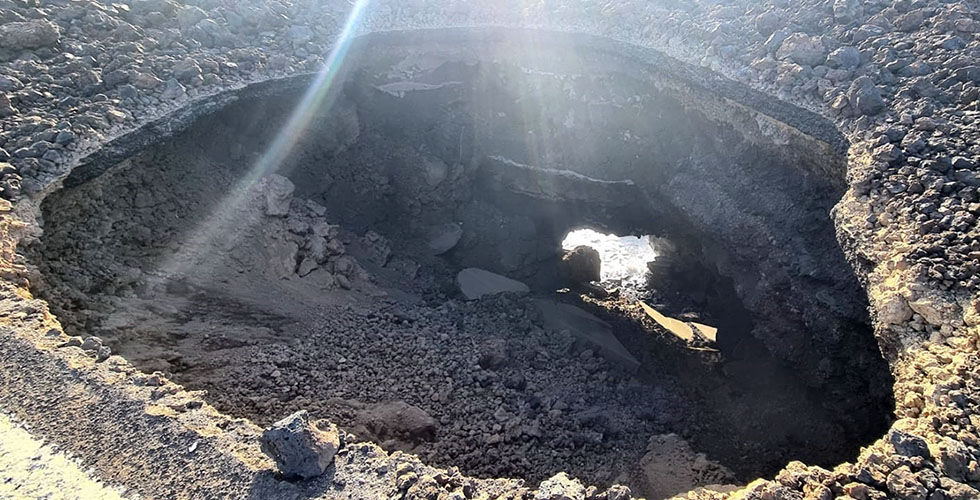Losses of four million euros per year and forced displacement of 5,000 people.
In less than 80 years, over 5,000 people in the Canary Islands may have to leave their homes due to climate change.
There are 47 high-risk points for flooding in the archipelago. By 2100, families living in these areas will need to be relocated to safer inland neighborhoods due to flooding and coastal erosion. This information comes from the Summary Report 2017-2021 on the Assessment of Climate Change Risk on the Coasts of the Canary Islands, conducted by Cartográfica de Canarias S.A. (Grafcan).

The Threat to the Eternal Spring of the Canary Islands.
Out of the 47 high-risk points:
- one is in La Graciosa
- nine in Lanzarote
- twelve in Fuerteventura
- seven in Gran Canaria
- ten in Tenerife
- five in La Palma
- two in La Gomera
- one in El Hierro
Popular coastal areas like Corralejo Dunes Natural Park in Fuerteventura, Garachico in Tenerife, Maspalomas in Gran Canaria, Caleta de Sebo in La Graciosa, and Famara Beach in Lanzarote are among those at risk.
A total of at least 140 kilometers of coastline are in serious danger of flooding.
The impacts threaten population centers, natural habitats, transportation and energy infrastructure, productive sectors, and cultural heritage.
Vulnerabilities and Economic Dependence.
Several factors make the Canary Islands particularly vulnerable to climate change.
- The archipelago’s small size and fragmentation limit resources, making it challenging to recover from losses. Additionally, among the Macaronesian region.
- The highest population density.
- Environmental disruptions also jeopardize the archipelago’s wealth of endemic species.
The high dependence on mass tourism further condemns the region.
The government’s report highlights that the islands maintain “a high economic specialization in the tourism sector with a low degree of sectoral diversification,” leading to a state of “dependence and vulnerability to political, economic, and environmental disturbances.“
In March 2022, Canary Islands received 1,253,686 tourists, emphasizing the region’s reliance on mass tourism. The consequences of climate change threaten to erase 148 beaches by 2050, resulting in annual losses of approximately 4,250,910 euros by 2100.

Impacts on Local Economy and Ecosystems.
The reliance on fossil fuels also affects the quality of ecosystems. Oceanographer Aridane González warns that rising temperatures will affect the eternal spring that attracts tourists to the Canary Islands. Lanzarote faces the greatest risk to its beaches, with potentially significant economic impacts on various municipalities.

According to the project, approximately 40,000 residents will be affected, a number subject to periodic updates given the “worst-case scenarios” predicted by scientific committees. Urging swift action, the Minister of Ecological Transition of the Canary Islands government has called for the approval of the Canary Islands Climate Change Law, allocating 2% of GDP to combat its effects.
Marine Ecosystems and Cultural Heritage.
Rising sea levels will submerge coastal areas, forcing some species to migrate inland.
The oceanographer highlights the threat to halophytes, seagrasses, and zooxanthellae, emphasizing the link between the retreat of certain species and human activities like wastewater discharge and port construction.
The study recommends protection measures for culturally significant elements at risk due to rising sea levels, such as Maspalomas Lighthouse, Vegueta neighborhood, Pérez Galdós Theater, rock engravings in La Palma, San Gabriel Castle, and Los Silos village.


Looking Ahead and Urgent Measures.
Gustavo Herrera acknowledges that it may be too late to prevent certain impacts.
Currently, adaptation measures are crucial to avoid casualties, such as installing early warning systems in vulnerable areas like Garachico. Urgent, coordinated policies are needed, according to Aridane González, who emphasizes the importance of addressing climate change’s broader impact on natural environments and human activities.
In conclusion, the scientist emphasizes the need for regulations to reduce our impact on natural environments, despite the challenges of climate change.












